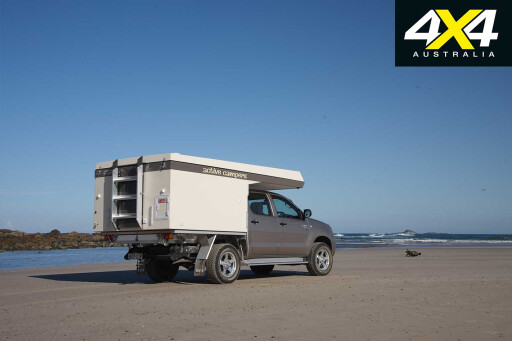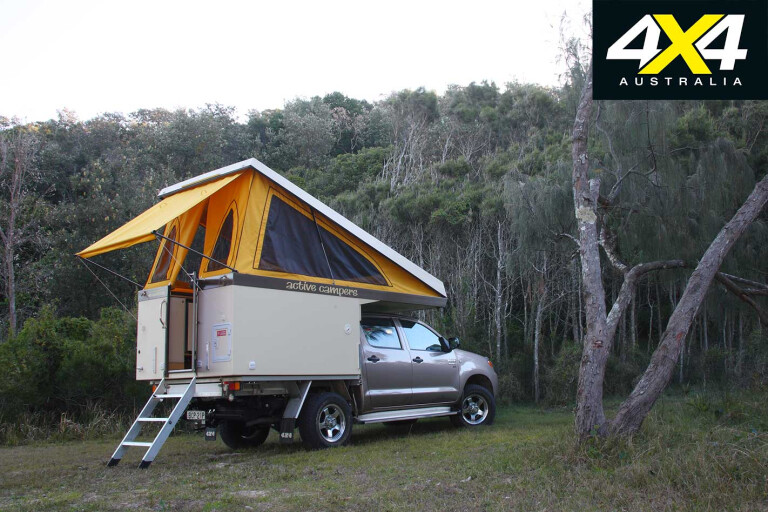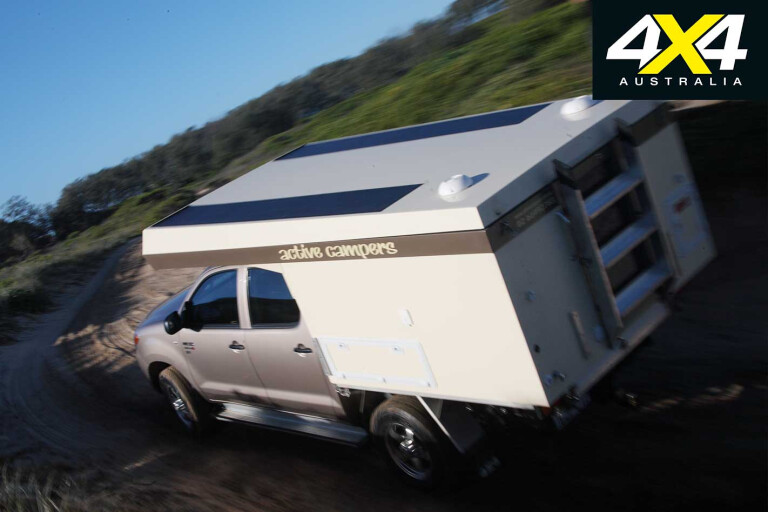
We off-roaders are a lucky bunch when it comes down to our bush accommodation choices. There are pluses and minuses for most: we’ve all slept in a tent or swag; real back-to-basics stuff that appeals to most of us, but not all.
This feature was originally published in 4x4 Australia’s February 2009 issue
A step up in sophistication is a roof-top tent – you’re above the creepy crawlies, able to catch a cooling summer breeze and, with quicker pack-up, getting on the road again is somewhat easier than a tent. But your bed is at the top of a ladder, you need to remove your bedding to pack up and, as with smaller tents, you can’t really set-up a deckchair if it’s raining.
 Camper-trailers – especially the hard-floored ones – are terrific accommodation for many travellers, offering a comfortable night’s sleep above ground level and – often – cooking under cover. But, like tents, the smaller ones offer varying degrees of claustrophobia for the 16 hours of the day you’re not asleep.
Camper-trailers – especially the hard-floored ones – are terrific accommodation for many travellers, offering a comfortable night’s sleep above ground level and – often – cooking under cover. But, like tents, the smaller ones offer varying degrees of claustrophobia for the 16 hours of the day you’re not asleep.
Some can take ages to set up and they cover two vehicles’ worth of ground. Plus, of course, they’re swinging from your towbar, which can make life interesting in difficult terrain.
So what about grabbing the best of these bush-freedom ideas and sticking ’em all in one big box on the back of your ute? That’s the thinking behind the Active Camper, a strong flip-lidded box for sleeping, cooking and living in while travelling.
Tough in the rough
.jpg )
The Active has been built on the NSW North Coast for 25 years with very few changes to the fundamental design. Weighing 450kg, the Active is easily shouldered by the popular Australian dual-cabs: Rodeo/Colorado/D-Max, HiLux, Navara and BT-50/Ranger, which are all bush-capable.
The Active is built from marine-spec timber ply, edged and framed with extruded, welded aluminium between the roof and walls. Rails stretch forward over the vehicle cab to support the bed area. Where alloy isn’t, stainless steel is used for fittings and fasteners.
The exterior is skinned in dimpled fibreglass providing scratch-resistance and waterproofing. Active claims its units are just about dustproof and the neutral tone of the fibreglass looks right at home on just about any ute’s colour.

A one-piece foam-cored fibreglass roof rises easily on two gas struts and the canopy is stitched from acrylic-backed canvas. Used on boats, this material is 100 percent waterproof and can be packed wet without risk of water ingress. When set-up, ventilation and vision is through midge-proof screens behind zip-down panels on all sides of the canopy.
One 120AH AGM battery (with 240V charger) provides power. There’s room for a second battery without having to install a battery in the vehicle’s engine bay. There’s room for two spare wheels, too, as long as they’re not too large. Solar is optional and Active provides an external 12V socket for powering fluoro or LED lead lights in the annexe area.

We didn’t try, but installing the four jacks and removing the unit takes 20 minutes, according to Active, making it useful for weekend treks. Active builds units suitable for standard tub-style bodies, as well as tray backs.
Ready for travel, the Active sits 1.3m above the vehicle tray and, depending on vehicle specs, it’s typically 2.25m high. Active offers an optional awning that can be pegged out on both sides of the vehicle. Good idea, that. In fact, the whole Active design is big on simplicity and bushability.
Getting away

We grabbed an Active for a short but revealing overnight run to the NSW North Coast. Once you have the knack, popping up the roof takes around 40 seconds so you can be quickly enjoying a cold can or chardy at the end of a long day.
Packing up takes around three minutes – the difference being the need to ensure the canopy is settled/poked into place – so with those numbers, even on a big-kay day you can use the Active for a proper sit-down lunch break rather than stand around baking in the sun.
With all the windows open, being inside the Active is like relaxing on a great big veranda. The kitchen area is at the rear of the unit and features a two-burner Smev stove on the right and a small sink on the left as you enter.

The small fridge (an Italian Isotherm) is installed under the sink. Bench space – in fact storage areas in general – is tight, but a pull-out table is mounted dead ahead, with seating for four.
The mattress is a queen-sized 100mm foam with zip-off covers and there’s room for bedding to be left in place when the roof comes down. Two reading lights are installed and it’s still possible to sit upright on the edge of the bed to pull on your boots.

On-road, the unit is tight and rattle-free. The higher centre of gravity was noticeable but never a concern over the bitumen and mild-to-middling off-road conditions (beach; dunes; trails) we tested on. Thanks to windows in the front wall and the door of the Active, rear vision is no problem.
The Active covers the necessities of bush touring in a comfortable package that’s easy to manoeuvre. The workmanship is terrific and trekking with an Active is good fun.

RATED
Available from: activecampers.com.au
L/W/h: 3800/1900/1310mm (closed)
Tare weight: 450kg
RRP: from $22,800

COMMENTS